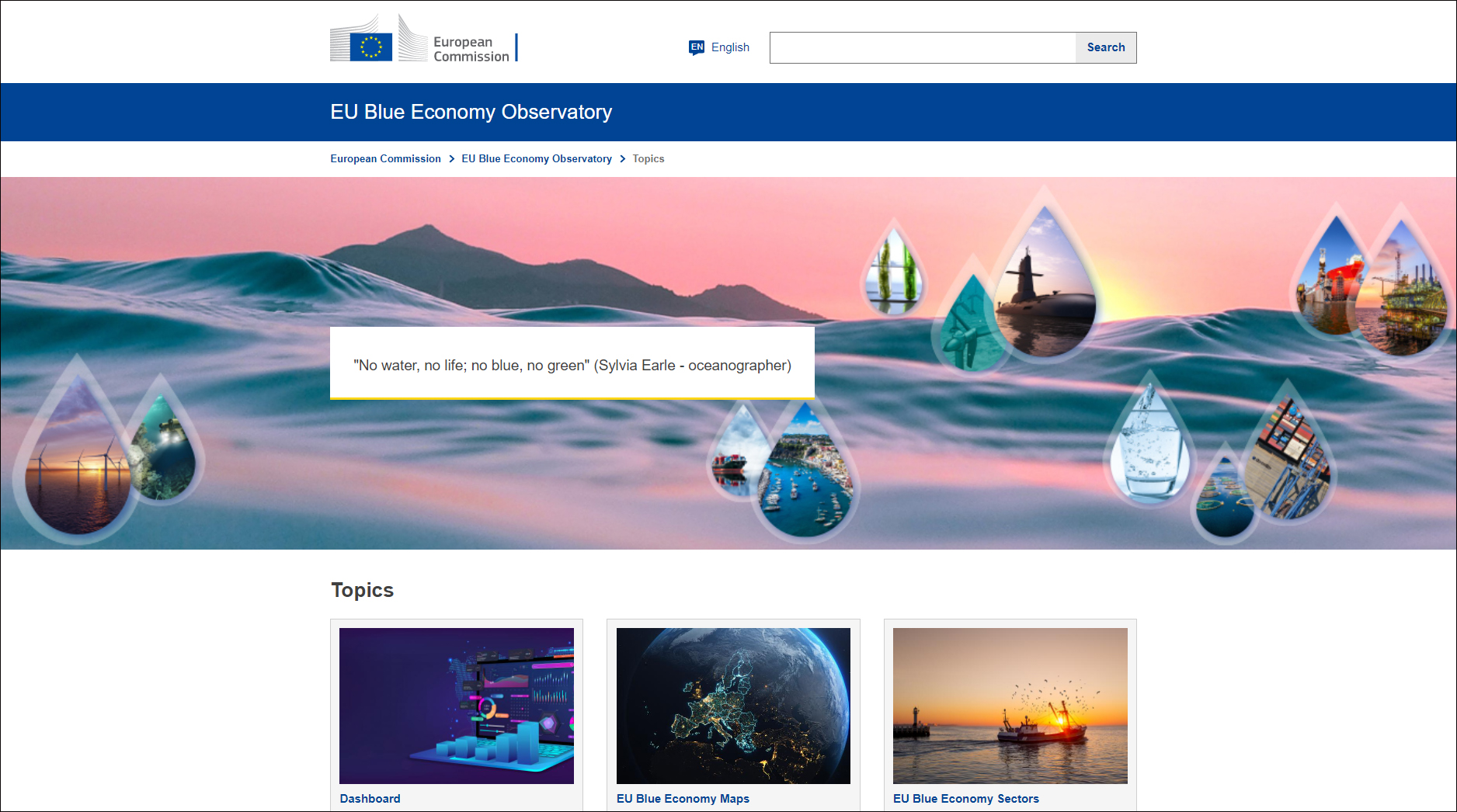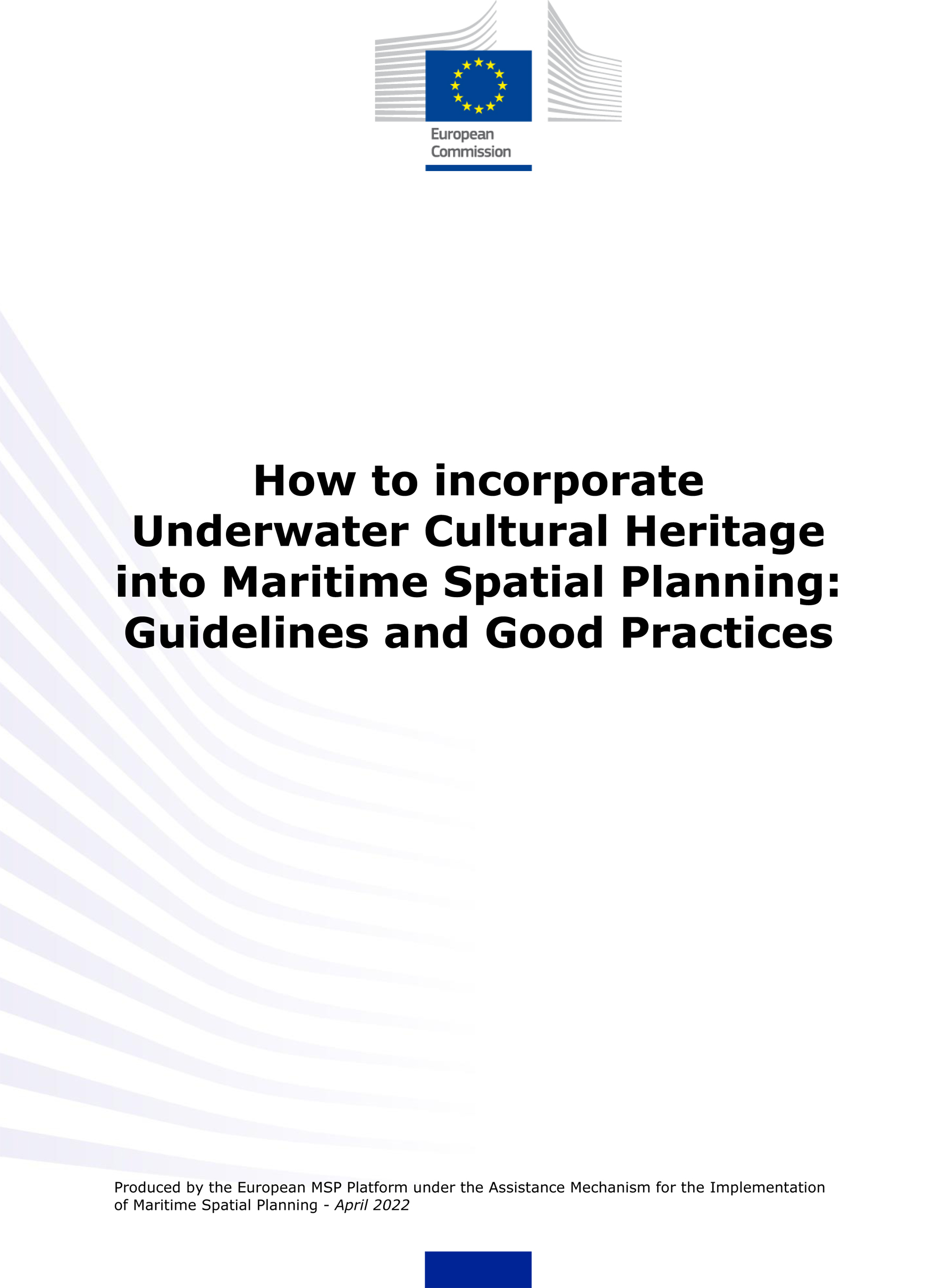Center for Coastal & Marine Studies
A new Blue Economy Observatory has been launched by the European Commission to bring together knowledge from different sources

The European Commission launches on 19 of May 2022 the EU Blue Economy Observatory, a new knowledge dissemination platform for the sustainability of our oceans, seas and coastal areas.
The new observatory will focus on socio-economic components of the maritime related sectors. It will provide a detailed picture of ocean-related activities, with latest data, scientific evidence, insights, market information and findings supporting ongoing trends and developments in the EU Blue Economy.
The EU Blue Economy Observatory intends to solve the current lack of sufficient available data about industries and sectors related to our oceans, seas and coasts.
Filling this knowledge gap with the latest and most complete scientific information will help policymakers and businesses make decisions in order to build a sustainable, resilient and climate-neutral blue economy in the EU. Moreover, the platform provides information relevant to the development, implementation and monitoring of policies, particularly in light of the European Green Deal.
EU Blue Economy report 2022: ocean economy fuels European green transition

The European Commission has published its annual EU Blue Economy Report to take stock and uncover the latest trends and developments in all economic sectors related to the oceans and coastal areas. With close to 4.5 million people employed, a turnover of more than €665 billion and €184 billion in gross value added, the EU blue economy sectors contribute significantly to the EU’s economy, especially in the coastal regions. Moreover, the report notes that the EU’s blue sectors are a spawning ground for innovative solutions and technologies that can help fight climate change and take the green transition to the next level. It also points at the high cost of inaction to fight climate change, as the damage of rising sea levels could cause a direct loss of more than €200 billion per year by 2080 in the EU.
On the basis of preliminary 2020 data, the Report provides an assessment of Covid-19 effects in the turbulent year 2020. The analysis confirms that Covid-19 had a significant impact on most blue economy sectors. This impact has been more than proportional, compared to the rest of the EU’s economy. This can be explained by the major share of coastal tourism in the EU blue economy – 44% of the total GVA and 63% of employment – which has been hit especially hard during the first year of the pandemic, to more than halve its original size based on preliminary figures.
The report highlights the significant potential for further growth of the blue economy by the development of the emerging and highly innovative sectors, such as the blue bioeconomy, blue-tech innovation and robotics, and ocean energy technologies. Although generally in their infancy, these technologies have the potential to offer sustainable solutions that can accelerate the transition needed for the EU to deliver on its ambitious sustainability commitments.
"How to incorporate Underwater Cultural Heritage into Maritime Spatial Planning": a new study by the European MSP Platform has been published

The European MSP Platform published a study on “How to incorporate Underwater Cultural Heritage into Maritime Spatial Planning – Guidelines and Good Practices”, the objective of this handbook is to provide concrete guidance on how Underwater Cultural Heritage may be considered and incorporated into the Maritime Spatial Planning (MSP) process in order to overcome threats to UCH, be established in practical terms, and subsequently developed. Thus, this handbook addresses relevant initiatives in their different stages of development: from those that are just starting up, to those that are already well-established, and looks at ways to achieve an ideal balance and give a new impetus to the nexus between the protection and preservation of UCH and the development of a sustainable blue economy in European seas.
Originally published by the European MSP Platform
Download pdf version here: How to incorporate Underwater Cultural Heritage into Maritime Spatial Planning, April 2022.
For more information on this topic follow also our joint, recently published, peer-reviewed research paper "Supporting multi-use of the sea with maritime spatial planning. The case of a multi-use opportunity development - Bulgaria, Black Sea" in Marine Policy.
Carbon stocks and sequestration in terrestrial and marine ecosystems: a lever for nature restoration?

A scoping analysis by the EEA and Wageningen University & Research is the first attempt to classify the different European Nature Information Network (EUNIS) habitat types of terrestrial and marine ecosystems according to their carbon stocks and carbon sequestration capacities. The study aims to create a baseline for further analysis, linking habitat types with carbon storage and sequestration capacities to support nature restoration and conservation, as well as climate mitigation policies. The data and findings presented are based on a literature review, expert knowledge and interpretation of existing studies from inside and, in some cases, outside the 27 EU Member States (EU-27).
Climate change mitigation and nature restoration are two sides of the same coin when it comes to achieving two main objectives of the European Green Deal; climate neutrality and increasing the EU’s natural capital. Well-functioning habitats can take up and store large amounts of carbon, reducing atmospheric CO2 levels and greenhouse gas emissions from land use practices. To use nature’s full potential, we need to know (1) the carbon storage and sequestration potential of European habitats in their present condition and how much carbon can be used to meet EU emissions policy targets; and (2) the measures available to increase carbon storage in habitats, and the synergies and trade-offs between these measures and ecosystem function. The EEA briefing addresses these questions.




























